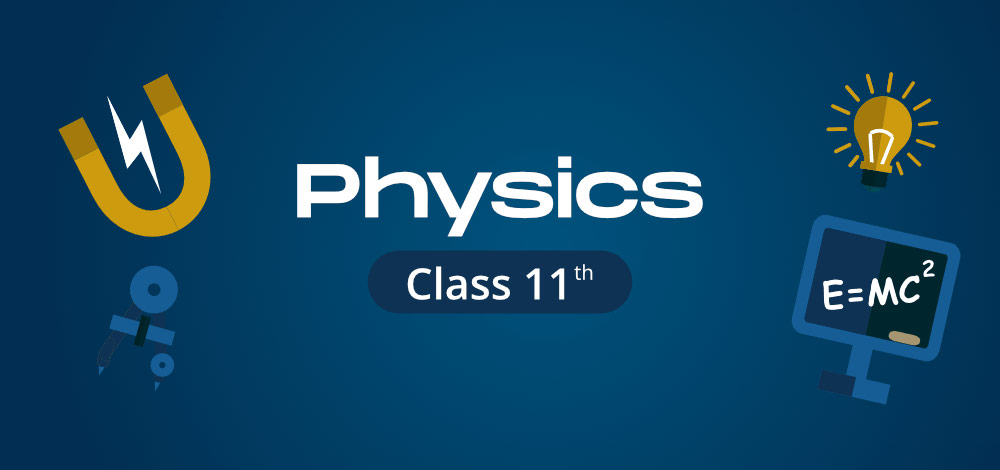This foundational chapter introduces students to the fascinating world of physics, providing an overview of its scope, fundamental forces in nature, and the profound impact physics has on our daily lives and technological advancements. Students will explore how physics investigates everything from the tiniest subatomic particles to the vast cosmos, learning about conservation laws, the elegant mathematical nature of physical principles, and the contributions of pioneering scientists like Newton, Einstein, and C.V. Raman.
The chapter serves as an inspiring gateway to physics education, helping students appreciate how this fundamental science underpins other scientific disciplines and has transformed human civilization through applications in fields ranging from medicine and energy to space exploration and telecommunications. By understanding the physical world at its most basic level, students develop not just scientific knowledge but also the critical thinking skills and curiosity that drive scientific progress.
Chapter 1: Physical World
Plus One Physics – SCERT Board
1. Introduction to Physics
- Definition: Physics is the study of nature and natural phenomena at its most fundamental level.
- Scope: Covers everything from the smallest subatomic particles to the vast universe.
- Aim: To understand the laws governing the natural world and express them in precise mathematical forms.
2. Scope of Physics
Physics covers a wide range of phenomena:
- Motion of objects (mechanics)
- Heat and temperature (thermodynamics)
- Light and optical phenomena (optics)
- Sound and wave phenomena (acoustics)
- Electricity and magnetism (electromagnetism)
- Structure of atoms and nuclei (atomic and nuclear physics)
- Behavior of elementary particles (particle physics)
- Properties of condensed matter (solid state physics)
3. Fundamental Forces in Nature
There are four fundamental forces:
| Force | Relative Strength | Range | Mediating Particle |
| Gravitational | 10^-39 (weakest) | Infinite | Graviton (theoretical) |
| Electromagnetic | 10^-2 | Infinite | Photon |
| Weak Nuclear | 10^-13 | Very short (~10^-16 m) | W^+, W^-, Z bosons |
| Strong Nuclear | 1 (strongest) | Short (~10^-15 m) | Gluons |
4. Unification of Forces
- Electromagnetic and Weak forces: Unified into the Electroweak force
- Grand Unified Theory (GUT): Attempts to unify Electroweak and Strong forces
- Theory of Everything: Aims to unify all four fundamental forces
5. Nature of Physical Laws
Physical laws are:
- Universal: Apply throughout the universe
- Absolute: Independent of the observer
- Simple: Often expressed in elegant mathematical equations
- Exact: Precise in predictions within limits of measurement
6. Conservation Laws
Important conservation principles:
- Conservation of energy
- Conservation of momentum
- Conservation of angular momentum
- Conservation of charge
- Conservation of mass-energy
7. Technology and Applications
Physics has led to numerous technological applications:
- Mechanics: Automobiles, machinery, space exploration
- Thermodynamics: Refrigeration, engines, power plants
- Optics: Cameras, microscopes, telescopes, fiber optics
- Electromagnetism: Electric motors, generators, transformers
- Electronics: Computers, telecommunications, consumer electronics
- Nuclear Physics: Nuclear power, medical applications
8. Physics and Society
- Physics has transformed society through technological applications
- Scientific knowledge helps in resource management and environmental protection
- Physics contributes to our understanding of natural disasters and climate change
9. Physics and Other Sciences
Physics relates to other sciences:
- Chemistry: Atomic structure and chemical bonding
- Biology: Biophysics, biomechanics
- Astronomy: Astrophysics, cosmology
- Geology: Geophysics, seismology
- Mathematics: Language for expressing physical laws
10. Key Scientists and Their Contributions
| Scientist | Contribution |
| Galileo Galilei | Foundation of modern experimental physics, laws of motion |
| Isaac Newton | Laws of motion, universal gravitation, calculus |
| Michael Faraday | Electromagnetic induction, laws of electrolysis |
| James Clerk Maxwell | Electromagnetic theory, Maxwell’s equations |
| Albert Einstein | Theory of relativity, photoelectric effect |
| Niels Bohr | Quantum model of the atom |
| S.N. Bose | Bose-Einstein statistics |
| C.V. Raman | Raman effect |
11. Important Concepts to Remember
- Physics explains natural phenomena through observation, experimentation, and mathematical modeling
- Physical laws are expressed as mathematical equations
- The scientific method is the foundation of physics research
- Physics knowledge is always evolving as new discoveries are made
- Most technological developments have their origins in discoveries in physics
12. Summary
Physics is the most basic of all sciences that seeks to understand the fundamental workings of nature. It provides the foundation for other natural sciences and has led to numerous technological applications that have transformed human civilization. The continuous pursuit of knowledge in physics expands our understanding of the universe and drives technological progress.
Complete Chapter-wise Hsslive Plus One Physics Notes
Our Hsslive Plus One physics notes cover all chapters with key focus areas to help you organize your study effectively:
- 1. Physical World Notes
- 2. Units and Measurements Notes
- 3. Motion in a Straight Line Notes
- 4. Motion in a Plane Notes
- 5. Laws of Motion Notes
- 6. Work, Energy and Power Notes
- 7. System of Particles and Rotational Motion Notes
- 8. Gravitation Notes
- 9. Mechanical Properties of Solids Notes
- 10. Mechanical Properties of Fluids Notes
- 11. Thermal Properties of Matter Notes
- 12. Thermodynamics Notes
- 13. Kinetic Theory Notes
- 14. Oscillations Notes
- 15. Waves Notes

1 thought on “HSSLIVE Plus One Physics Chapter 1: Physical World Notes”